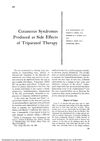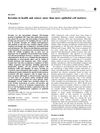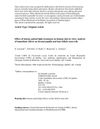Search
forLearn
5 / 6 resultslearn Epidermal Growth Factor
learn Osteopontin
signaling protein that, when suppressed, may grow hair by reducing inflammation and stem cell loss
learn Hair Multiplication
extract, clone, and reinsert your own hair cells
learn Overview
Research
5 / 1000+ results
research Esrp1-Regulated Splicing of Arhgef11 Isoforms Is Required for Epithelial Tight Junction Integrity
The study concluded that specific proteins are necessary to maintain the structure that holds epithelial cells tightly together.

research Cutaneous Syndromes Produced as Side Effects of Triparanol Therapy
Triparanol therapy can cause hair loss and skin dryness without inflammation or damage to hair follicles or skin structures.

research Keratins in Health and Cancer: More Than Mere Epithelial Cell Markers
Keratins help protect cells, aid in cancer diagnosis, and influence cancer behavior and treatment.
research Epidermolysis Bullosa Simplex: A Paradigm for Disorders of Tissue Fragility
Epidermolysis bullosa simplex causes easily blistered skin due to faulty skin cell proteins, leading to new treatment ideas.

research Effect of Intense Pulsed Light Treatment on Human Skin In Vitro: Analysis of Immediate Effects on Dermal Papillae and Hair Follicle Stem Cells
Intense pulsed light treatment mainly damages pigmented hair parts but spares stem cells, allowing hair to regrow.
Community Join
5 / 32 results
community Compressed part of research of theory of androgenic/anabolitic balance. AGA h-responders analytic. Theory of physio-metabolitic method of anti AGA treatment
The treatment for androgenetic alopecia involves using finasteride and minoxidil with intense exercise and cold exposure to boost metabolism and reduce androgenic effects, potentially leading to hair regrowth. This approach may activate biological pathways for improved hair and overall health.

community If You Have DUPA, PLEASE READ THIS: Everyone Should Be Scalp Biopsied
Scalp biopsies are crucial for diagnosing hair loss conditions like Diffuse Unpatterned Alopecia (DUPA) and retrograde hair loss, as treatments like finasteride and dutasteride may not be effective if other conditions are present. Combining PPAR-GAMMA agonists with retinoids could improve treatments for conditions like Lichen Planopilaris.
community Long term finasteride users; Did you notice any improvement after 2 years?
Long term Finasteride users and whether or not they have noticed improvements after two years of use, with other treatments such as Minoxidil and dermarolling also discussed. Some replies suggest that improvement is possible even beyond the two year mark while others caution against believing studies backed by the Post-Finasteride Foundation.
community abusing caffeine boosts DHT levels!
Caffeine intake may increase DHT levels, but its impact on hair loss is minimal compared to genetic factors. Excessive caffeine can cause health issues, and its effects on hair loss are not directly applicable to humans based on rat studies.
community Results of Procyanidin B2 in clinical studies
Procyanidin B2, a compound derived from Annurca apples, as a potential treatment for pattern hair loss. Several clinical studies were mentioned, which found that procyanidin B2 could increase hair growth, density, and keratin content. Other treatments such as Minoxidil, Finasteride, and RU58841 were not discussed.